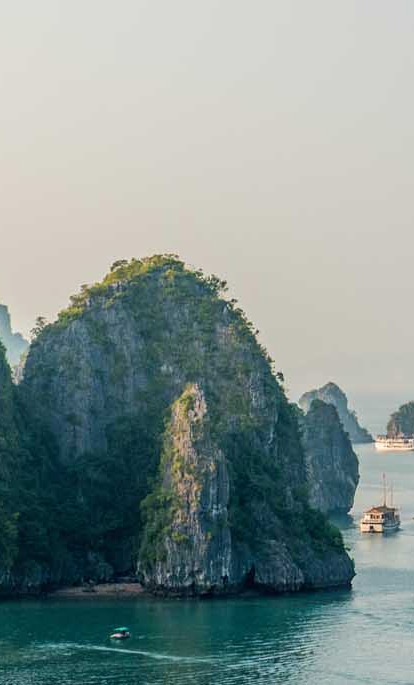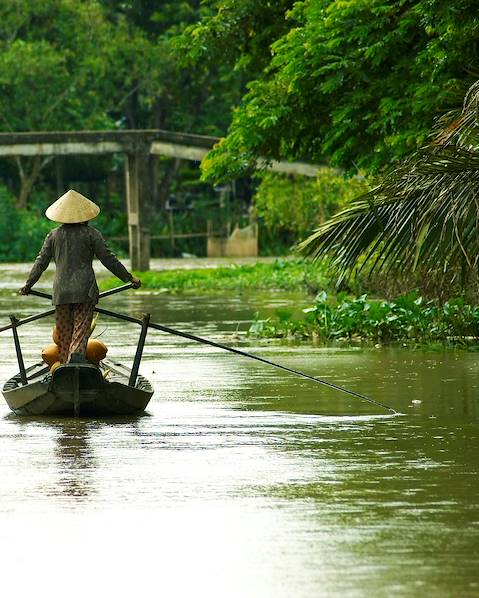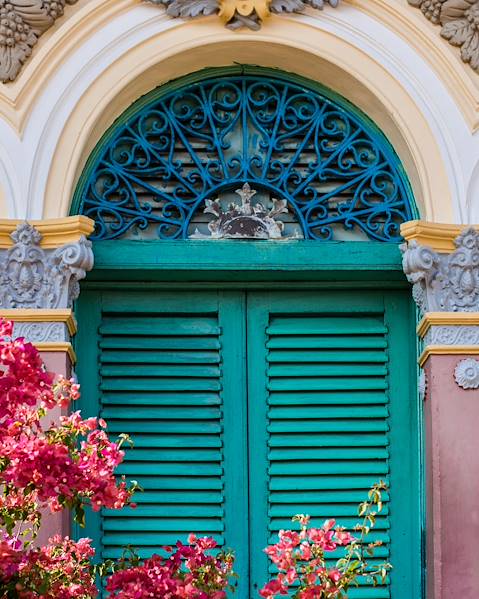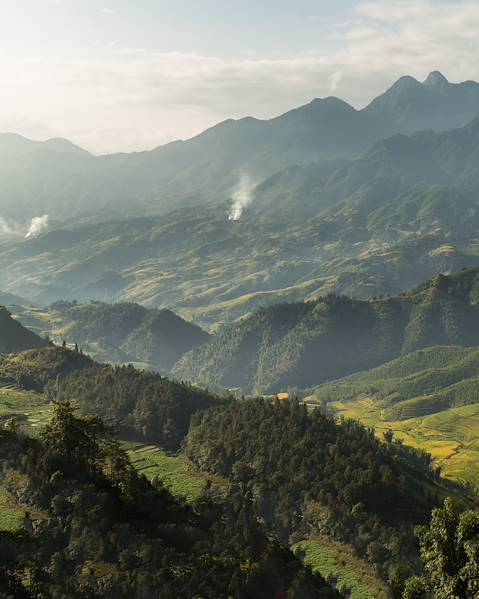The geography of Vietnam presents a wealth of natural wonders. From the stunning coastline of Ha Long Bay to the lush mountains of Sapa, its diverse regions offer a rich blend of landscapes, climates and cultural experiences. Whether you're exploring the bustling streets of Hanoi, cruising through the Mekong Delta, or immersing yourself in the history of Hue, Vietnam is a country that will captivate your senses and leave you with lifelong memories. Read on to learn more about the geography of Vietnam, where adventure and beauty await at every turn.
Overview
Vietnam is a long, narrow nation (spanning just 30 miles wide in places) on the eastern edge of the Indochina peninsula. Its neighbors include China to the north and Laos and Cambodia to the west, while the South China Sea lies to the east and south. The mountains of the Annam Cordillera rise over most of western Vietnam, and a seemingly endless coastline dominates the east. Two of Vietnam's largest rivers, the Mekong in the south and the Red in the north, lead to huge swampy deltas which are home to most of the country's people and provide fertile ground to grow rice and many other crops. The geography of Vietnam is divided into three main regions: north, central and south, each with its own characteristics that together create a country of contrasts.
Northern Vietnam
The northern region of Vietnam is known for its majestic mountains, deep valleys and stunning landscapes. The iconic Ha Long Bay, an UNESCO World Heritage Site, is located in this region. With its emerald waters and towering limestone karsts, Ha Long Bay is a must-visit destination for nature lovers. Another notable feature of the north is the Hoang Lien Son mountain range, which includes Fansipan, the highest peak in Indochina. This region is also home to the capital city, Hanoi, a bustling metropolis that blends modernity with traditional Vietnamese culture.
Central-Vietnam
Central Vietnam is characterized by its long coastline, picturesque beaches and historical sites. The city of Hue, once the imperial capital of Vietnam, offers a glimpse into the country's rich history. The nearby ancient town of Hoi An is another gem of the region, with its well-preserved architecture and vibrant lantern-lit streets. Further south, the city of Da Nang is a popular tourist destination, known for its beautiful beaches and the iconic Marble Mountains. These limestone hills are home to numerous caves, pagodas and breath-taking viewpoints.
Southern Vietnam
The southern region of Vietnam is a vibrant and bustling area, with Ho Chi Minh City (formerly Saigon) as its economic and cultural hub. The city offers a mix of modern skyscrapers, colonial architecture and bustling markets. The nearby Mekong Delta, often referred to as the 'rice bowl' of Vietnam, is a vast network of rivers, canals and lush green fields. Taking a boat tour through the delta is a fascinating experience, offering a glimpse into the local way of life and inviting exploration of the floating markets - the perfect was to soak up some of the most iconic geography of Vietnam.
Climate
Vietnam's climate varies from region to region, influenced by its diverse geography. Generally, the country experiences a tropical monsoon climate, with distinct wet and dry seasons. The north has four seasons. Summers (May to September) are hot and humid, while winters (December to February) can be cold, especially in the highlands. Spring (March to April) and autumn (October to November) are considered the most pleasant seasons, with milder temperatures and less rainfall. The central region has a more consistent climate, with high temperatures and humidity year-round. The dry season lasts from December to April, while the wet season occurs from May to November, with the highest rainfall in June and July. Southern Vietnam has a warm and humid climate, with little variation in temperature throughout the year.
Iconic Landmarks
Vietnam is home to numerous iconic landmarks that showcase its natural beauty and cultural heritage. Here are just a few of the country's must-visit destinations:
- Ha Long Bay: This UNESCO World Heritage Site is a breath-taking seascape of limestone karsts jutting out of emerald waters, while neighboring Bai Tu Long Bay offers a more serene and untouched natural environment. Taking a cruise is a popular way to explore the area's beauty.
- Hoi An: Known for its well-preserved architecture, lantern-lit streets and vibrant markets, Hoi An is a charming town that transports visitors back in time.
- Phong Nha-Ke Bang National Park: This national park is home to some of the world's largest caves, including Son Doong, which is considered the largest cave on Earth.
- Cu Chi Tunnels: Located near Ho Chi Minh City, these tunnels were used by the Viet Cong during the Vietnam War. Visitors can explore a small section of the tunnels and learn about the history of the war.
- Sapa: Nestled in the Hoang Lien Son mountain range, Sapa is a picturesque town known for its terraced rice fields and ethnic minority cultures.
Ready to pack your bags and embark on a journey through the fascinating geography of Vietnam? Our expert team are on hand to help you plan your ultimate trip.
















